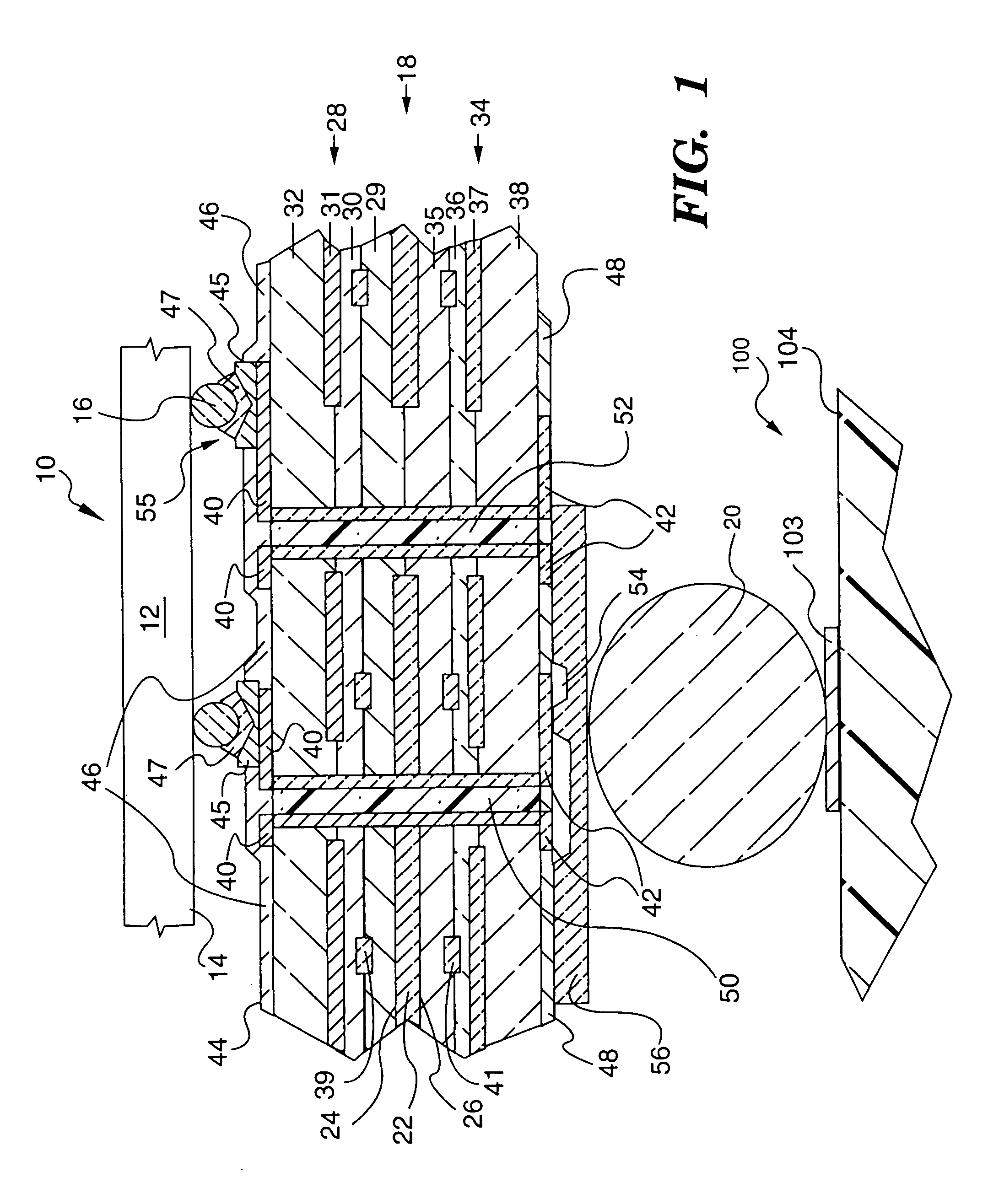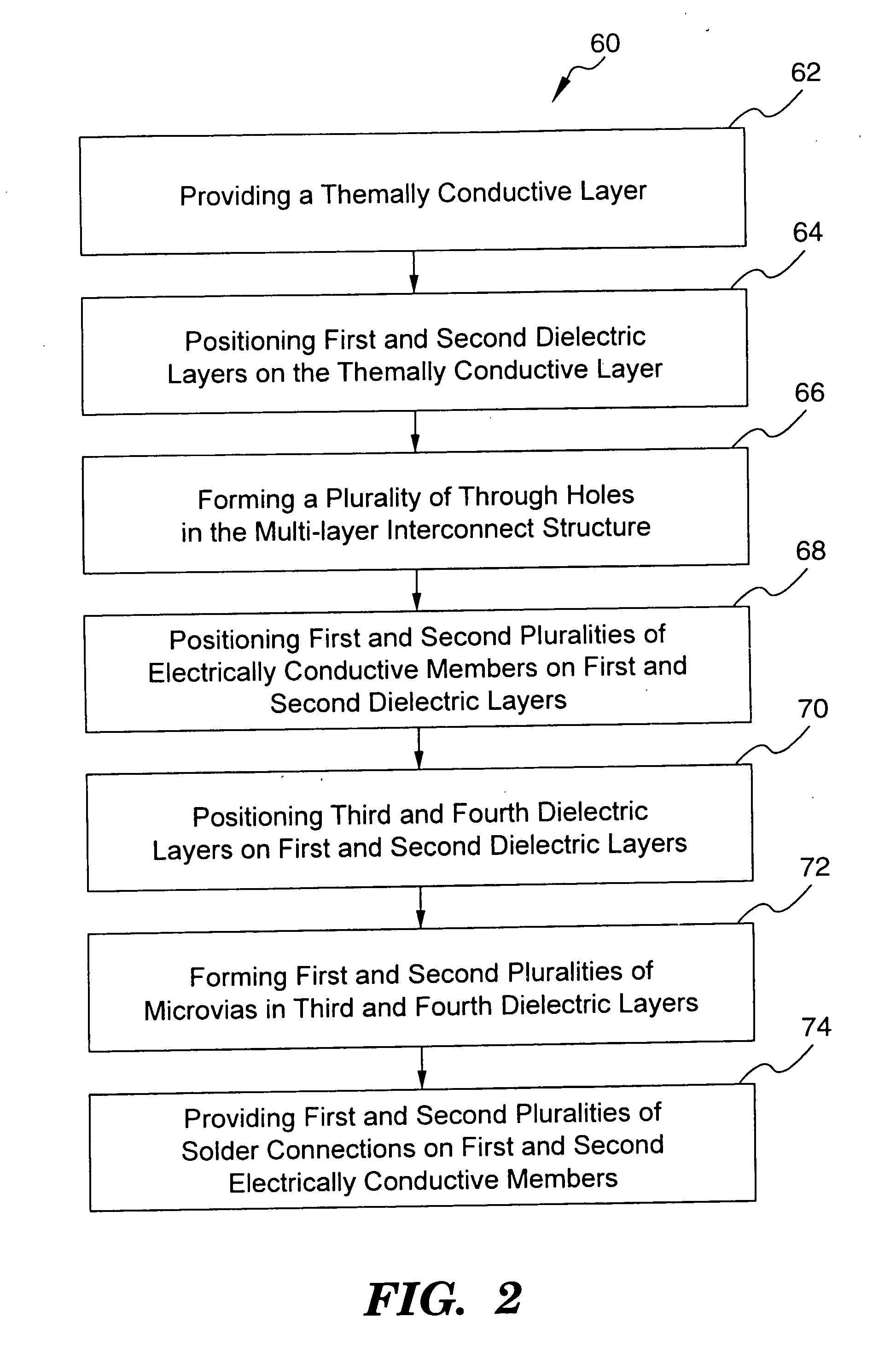Electronic package with optimized lamination process
a technology of electronic packaging and lamination process, applied in the direction of printed circuit stress/warp reduction, printed element electric connection formation, printed circuit aspects, etc., can solve the problems of significant reliability concerns, and high stress during thermal cycling operation of industry standard semiconductor chip array interconnections to the organic chip carrier. , to achieve the effect of high density, high density and convenient subsequent deposition of conductive metal
- Summary
- Abstract
- Description
- Claims
- Application Information
AI Technical Summary
Benefits of technology
Problems solved by technology
Method used
Image
Examples
Embodiment Construction
[0033] The present invention provides an electronic package which includes a multi-layered interconnect structure (e.g., a substrate comprising organic dielectric material, such as an organic chip carrier) and a semiconductor chip, the multi-layered interconnect structure being relatively compliant and having a coefficient of thermal expansion (CTE) of about 10 to about 12 ppm / ° C. which will not cause failure of interconnections between the semiconductor chip and a printed circuit board to which the package can be assembled. The multi-layered interconnect structure may be comprised of a single layer as an embodiment of the present invention. Failure of an interconnection, such as a solder interconnection, is defined as an increase of at least one ohm in electrical resistance of the interconnection as a consequence of being subjected to each test (i.e., test category) of Thermal Acceptance Testing (TAT), wherein the interconnection is actually tested under each TAT test or is altern...
PUM
| Property | Measurement | Unit |
|---|---|---|
| electrical resistance | aaaaa | aaaaa |
| temperature | aaaaa | aaaaa |
| temperature | aaaaa | aaaaa |
Abstract
Description
Claims
Application Information
 Login to View More
Login to View More - R&D
- Intellectual Property
- Life Sciences
- Materials
- Tech Scout
- Unparalleled Data Quality
- Higher Quality Content
- 60% Fewer Hallucinations
Browse by: Latest US Patents, China's latest patents, Technical Efficacy Thesaurus, Application Domain, Technology Topic, Popular Technical Reports.
© 2025 PatSnap. All rights reserved.Legal|Privacy policy|Modern Slavery Act Transparency Statement|Sitemap|About US| Contact US: help@patsnap.com



